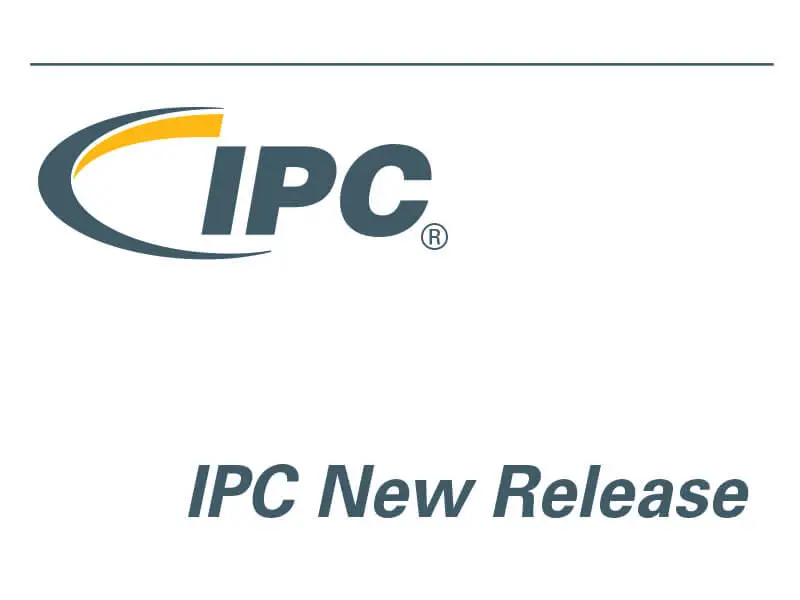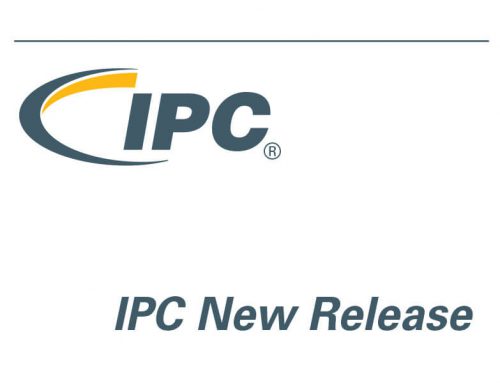This IPC-7530A standard provides useful and practical information for developing thermal profiles to produce acceptable SnPb and Pb-free electronics assemblies. This IPC-7530A revision expands the focus of the original standard from reflow profiling to include profiling for vapor phase, laser, selective soldering and wave soldering. The revision also includes a full-color troubleshooting guide for addressing common defects which can be attributed to profiling. Number of pages 42. Released March 2017.
IPC-7530A Guidelines for Temperature Profiling for Mass Soldering Processes (Reflow and Wave)
SCOPE
This standard describes thermal profile guidelines and practical guidelines to meet requirements to produce acceptable solder joints in mass soldering processes, including but not limited to reflow and wave soldering. Thermal profile is a unique temperature vs. time plot for each fully populated printed wiring board assembly (PWBA), using thermocouples attached with high-temperature solder or copper or aluminum tapes to selected representative components of the PWBA as it travels at a given belt speed (i.e., transport speed) through various temperature zones of an oven or soldering system.Purpose The purpose of this standard is to provide useful and practical information for developing thermal profiles to produce acceptable SnPb and Pb-free electronics assemblies. This standard is for managers, design and process engineers and technicians who deal with mass soldering processes.
Background During mass soldering, it is important that all solder joints reach the minimum soldering temperature. Minimum soldering temperature is the minimum temperature necessary to ensure metallurgical bonding of the solder alloy and the base metals to be soldered. Metallurgical bonding requires that the surfaces to be soldered and the solder reach this minimum soldering temperature for a sufficient time to allow wetting of the solder surfaces and the formation of a layer(s) of intermetallic compound(s) of some of the base metal(s) with one or more constituents of the solder alloy. As a practical matter, minimum soldering temperature is somewhat (~ 25 °C) above the liquidus temperature of the solder alloy. The solder joint on a given PWBA that is the last to reach minimum soldering temperature (typically on or underneath one of the components with the highest thermal mass) determines the temperature profile setting for a given PWBA and soldering process/machine. Developing a good profile is a balancing act for the process engineer, who also needs to make sure smaller and temperature-sensitive components do not overheat or become damaged. Reflow soldering requires controlled rates of heating and subsequent cooling; however, too rapid a heating rate can damage PWBAs and components. High cooling rates can also damage components and result in temperature gradients of sufficient magnitude to warp PWBAs and larger components and also fracture solder joints. Because of this, appropriate temperature profiling is essential for ensuring high-quality solder joints. Even though different products, based on their thermal mass, require different amounts of thermal input, all products must achieve the minimum temperature (temperature above liquidus) without exceeding the maximum temperature (without damage to any components) within a defined time period (thermal profile). This is the key reason for developing a unique profile for each product. Thermal input is determined by temperature/gas flow settings in each zone, the number of zones and the belt speed, which stays the same in each zone. Establishing minimum temperature, maximum temperature and duration in a zone ensures formation of intermetallic bonding between the component leads and their corresponding footprint or land patterns on those pads. All components, even though their thermal masses are different, must meet the same minimum and maximum temperature requirements. This is the biggest challenge for developing a profile, so developing a thermal profile for a PWBA with very large thermal mass components (e.g., a large ball grid array (BGA)) and small thermal mass components (e.g., 0201 or smaller chip resistors and capacitors) is a balancing act. In addition, different heating and cooling rates will have various effects on a variety of defects, adding more complexity to the balancing act. For example, a slower heating rate will help reduce voids in a BGA, but it will increase the potential for head on pillow (HoP) in the same BGA.
Terms and Definitions Other than those terms listed below, the definitions of terms used in this standard are in accordance with IPC-T-50.
Thermal Profile A unique temperature vs. time plot for each fully populated PWBA, using thermocouples attached with high-temperature solder or copper or aluminum tapes to selected representative components of the PWB as it travels at a given belt speed through various temperature zones of an oven or soldering system. Each product requires unique oven settings and belt speed (recipe) to achieve the desired profile on the PWBA.
Preview the IPC-7530A table of contents .pdf file.
Developed by the Thermal Profiling Guide Task Group (5-22h) of the Assembly & Joining Committee (5-20) of IPC. Users of this standard are encouraged to participate in the development of future revisions.


